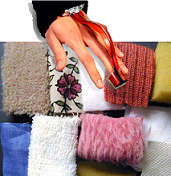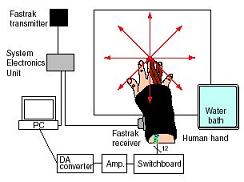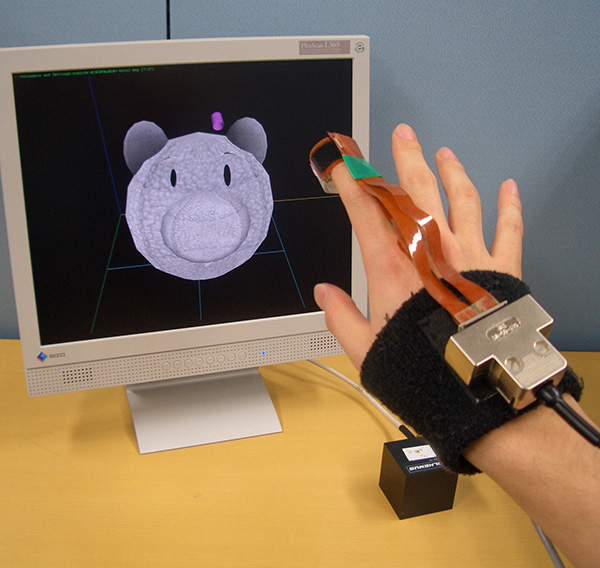Innovative Applications based on Human Tactile Mechanism
Representation of Artificial Tactile Feeling
Representation of artificial tactile feeling has been placed emphasis as new technology to augment virtual reality technology, also as new communication media for remote robotic manipulation or Internet shopping.
We have been studying presentation methods for qualitative surface textures of objects, such as clothes. Our major strategy for tactile presentation is applying vibratory stimuli to fingers.
We also have been studying tactile information processing of humans in psycophysic, engineering and numerical computation methods.
Synthesizing Tactile Feelings by Selectively Stimulating Mechanoreceptor Classes
 |
Multiple tactile feelings, such as pressure, roughness and friction feelings can be synthesized by ICPF tactile display, which we have developed and studied effective displyaing methods. A device in left pictures replicates surface textures of objects including qualitative information by mechanically stimulating three receptor classes selectively. Activation of each class can be controlled using the device. Because each class has different frequency response characteristics and ICPF tactile display can produce superposed vibrations, each vibration activates each class. |
Tactile Displaying Method in Response to Rubbing Motion
 |
We are studying the relationships between rubbing motions and tactile represence. Rubbing motion cannot be ignored, discussing humans' natural touch. Therefore we are proposing tactile display methods in syncronization with hand motions. The left figure illustrates our experimental setup, in which subjects virtually touch clothes. |
Touch a 3D Staffed Pig in a Computer
 |
As a demonstration of integrated technology studied in our laboratory, we developed a "touch a virtual pig" system. You can feel differences of clothes and rub it along its spherical nose or ears. The system presents roughness, softness and friction feelings to fingers just by mechanically vibratory stimuli, which are controlled according to rubbing motions. |